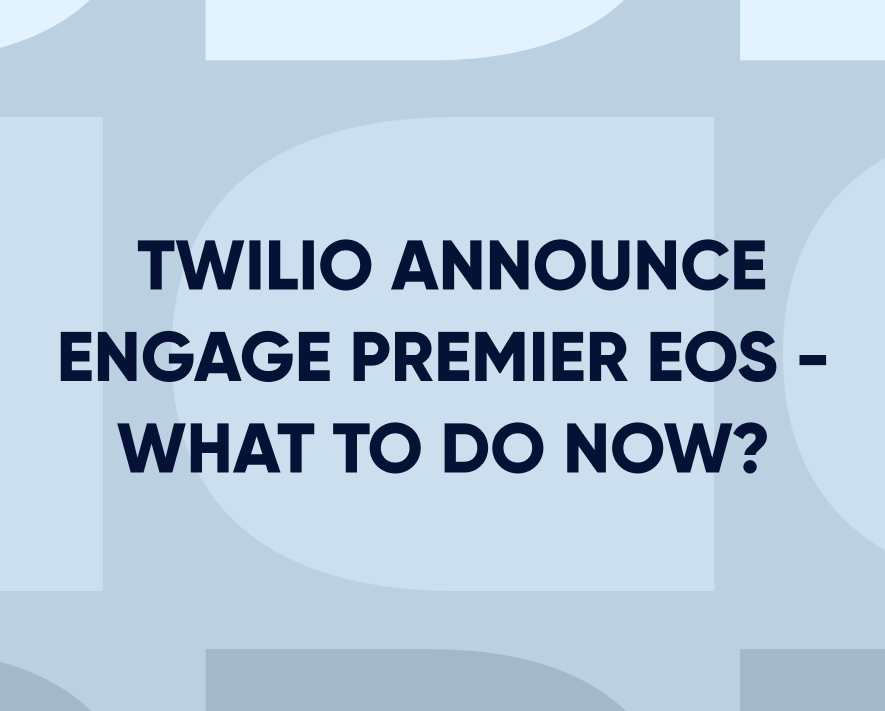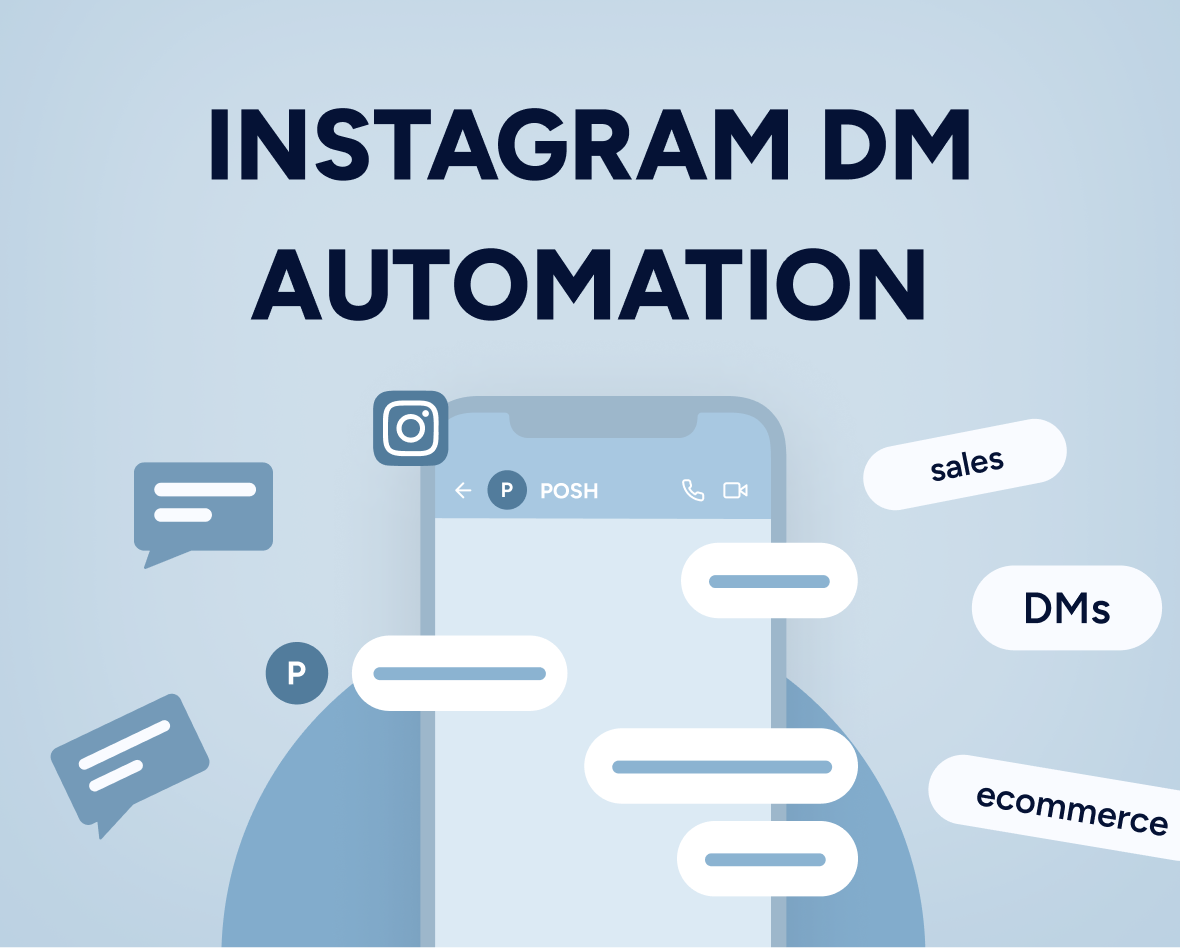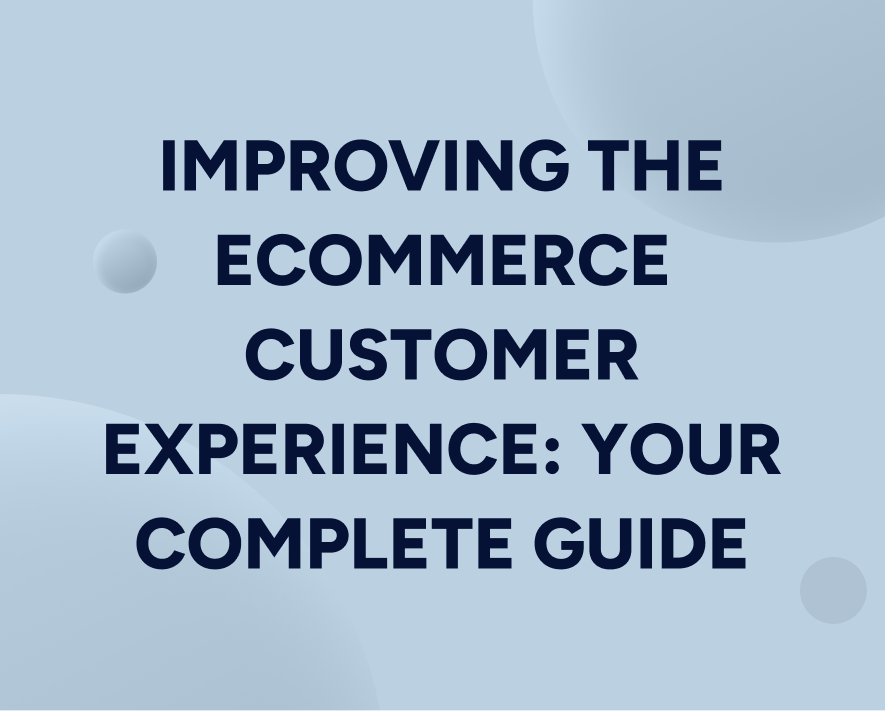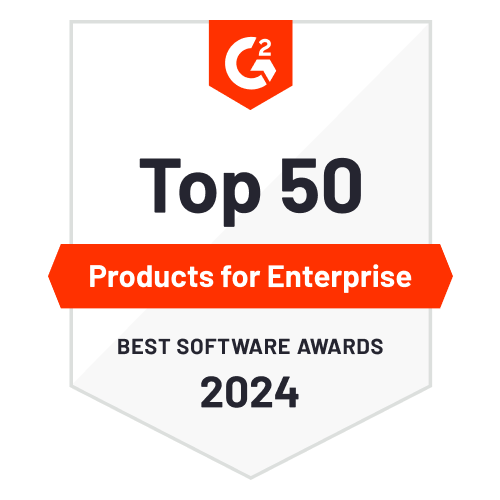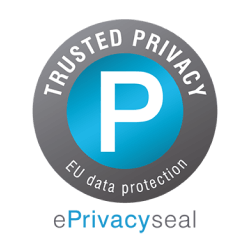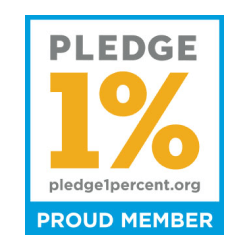8 Best Customer Data Platforms (CDPs) in 2024: In-Depth Look
Customer data platforms (CDPs) help online businesses by:
Aggregating customer data from multiple sources — like analytics tools, customer service software, CRMs, and point-of-service (POS) devices — into a single database.
Resolving omnichannel identities and creating unified, 360-degree profiles of each customer.
Having all their data in one place helps companies overcome data silos, create detailed customer segments, and get a clear picture of the entire customer journey.
However, CDPs can be very different beyond their fundamental data aggregation, identity resolution, and segmentation functionalities.
Updated on 9 Jul 2024
In this post, we’ll help you find the right CDP for your business by reviewing the eight best CDPs and organizing them into two categories:
- Actionable CDPs: Insider, Bloomreach, Salesforce Marketing Cloud CDP, and Emarsys. These CDPs, in addition to their data unification and segmentation capabilities, excel at activation — the process of using your data to create personalized, cross-channel experiences. They offer lots of built-in features and activation channels under one roof, like on-site, mobile app, web push, email, SMS, WhatsApp, and so on. This makes them a great choice for marketers looking to use their data to drive personalization and growth.
- Access and Data Analytics CDPs: Segment, Tealium, mParticle, and Treasure Data. These CDP solutions are geared toward more technical roles and use cases — like data governance, data cleaning, SQL queries, and schema management. Their primary aim, after resolving and unifying customer data, is to push segments into downstream platforms. This makes them a better choice for data analysts, data scientists, and developers looking to manage their data, instead of using it to run personalized marketing campaigns.
Finally, we’ll also discuss three frequently asked questions about the types of data CDPs can ingest and the differences between CDPs and other similar platforms.
Insider can aggregate all your customer data from online and offline sources in one place and use that data to drive affinity-and-intent-informed, personalized customer experiences across all touchpoints. Visit our website or schedule a demo with our team to learn more about our platform.
Actionable CDPs
These CDPs are designed to help brands understand their customers, build detailed customer segments, and create personalized experiences for them.
Besides their data aggregation capabilities, these CDPs also have:
- Native support for various marketing channels, like SMS, email, WhatsApp, and Facebook Messenger. This means you can use your data to run marketing campaigns across different channels without needing third-party providers (e.g., email marketing software, website personalization tools, and so on).
- Cross-channel marketing automation and personalization features. These features help you design a personalized experience for each customer across every touchpoint — from your website or mobile app through messaging channels like SMS and WhatsApp.
This makes actionable CDPs a great choice for marketers and growth professionals looking to improve revenue, lifetime value (LTV), and customer acquisition costs (CAC) by showing relevant messaging, content, and product suggestions to the right customers at the right times.
#1 Insider
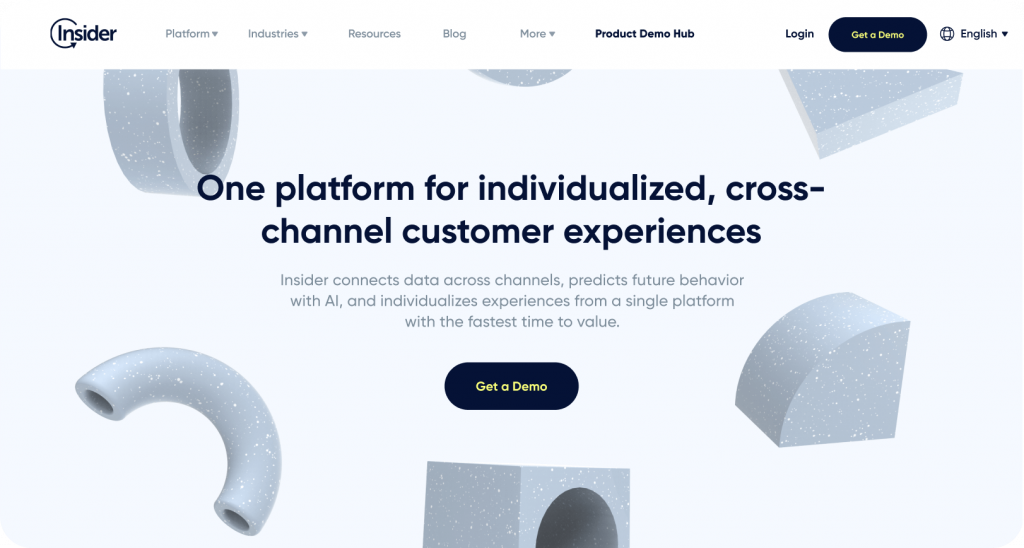
Insider brings together all your customer data and makes it easy to activate that data across your website, mobile app, and messaging channels.
Brands like AVON, Samsung, and Toyota use Insider to:
- Aggregate their customer data in one place and overcome data silos. Our Actionable CDP can ingest information from any online or offline source — including CRMs, CMSs, POS devices, customer support tools, analytics tools, marketing platforms, legacy systems, APIs, and so on.
- Get accurate, 360-degree profiles of their customers. Insider creates unified customer profiles based on implicit (e.g., behaviors and interests) and explicit data (e.g., survey answers), as well 120+ attributes (e.g., CRM IDs, phone numbers, and emails). Our AI-powered algorithms use this data to automatically predict customers’ likelihood to purchase or churn, their discount affinity, their potential spending, and more.
- Use their data to increase revenue, average order value (AOV), and lifetime value (LTV). Insider was built to help brands use their data to create personalized experiences and marketing campaigns across all touchpoints — including their websites, mobile apps, push notifications, email, SMS, RCS, WhatsApp, and Facebook Messenger.
Insider has been consistently ranked as the leading CDP by IDC and G2.
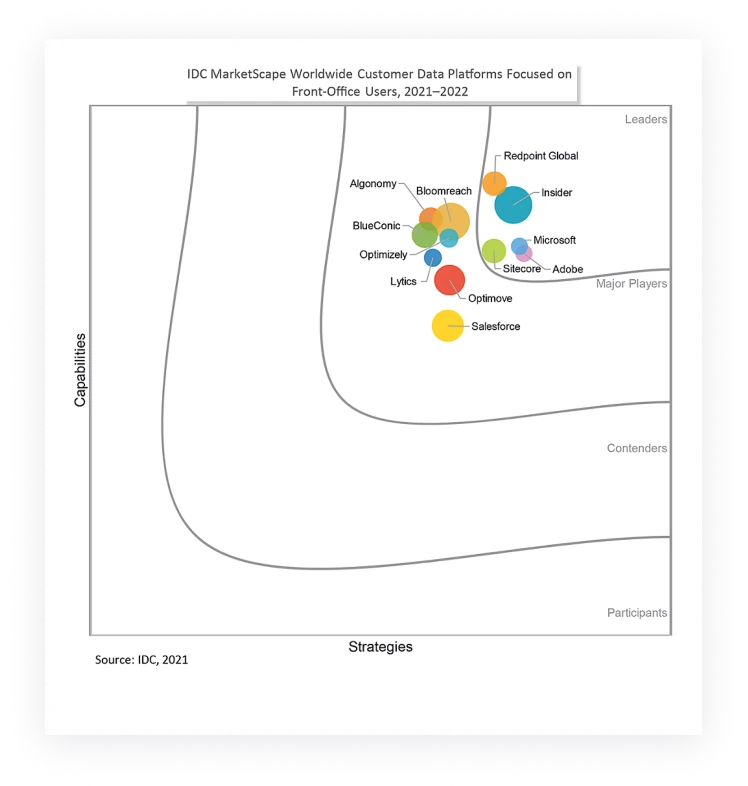
Additionally, our focus on customer convenience has led to G2 ranking us as the top CDP in categories like ease of use and ease of admin.

Here are four ways you can use Insider’s Actionable CDP and broader capabilities to aggregate your data, understand your customers, and drive revenue.
1. Get an Accurate, 360-Degree View of All Visitors and Customers (Based on Implicit and Explicit Data)
The process of getting your data into a CDP can be difficult and time-consuming. To overcome this issue, our team of experts will:
- Set up Insider for you (with no extra setup charge). We’ll help you get all relevant customer data into our platform. For example, we can aggregate behavioral data from Amplitude, sales data from HubSpot, customer support data from Zendesk, NPS scores from SurveyMonkey, and offline data from POS devices.
- Analyze your site, analytics, and customer data before our first kick-off meeting. This lets us give you ideas for creating new campaigns immediately after the setup, so you don’t waste time wondering what to do with your aggregated data.
After the setup, you’ll get a dashboard full of useful stats and metrics about your visitors and customers, as you can see below.
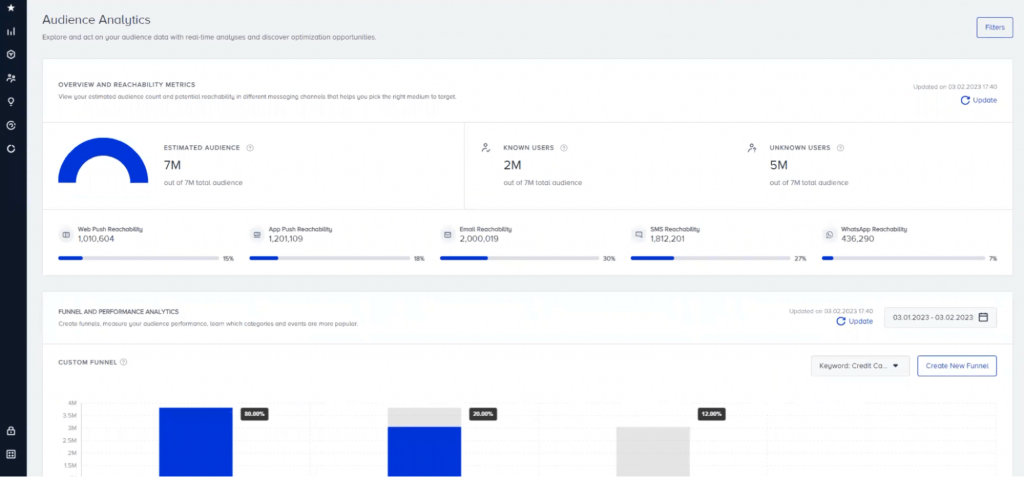
You can also start making meaningful changes based on your data immediately, like:
- Offering discount coupons to customers with a low satisfaction score (based on data from tools like HubSpot, SurveyMonkey, and Zendesk).
- Personalizing your website’s content based on users’ browsing behavior in your mobile app (based on data from tools like Shopify and Salesforce Audience Studio).
- Notifying customers when there’s a decrease in the price of a product they’re interested in (based on data from tools like Microsoft 365 and Magento).
We’ll discuss various examples throughout this post, but if you want more ideas now, check out our interactive Actionable CDP Explorer.
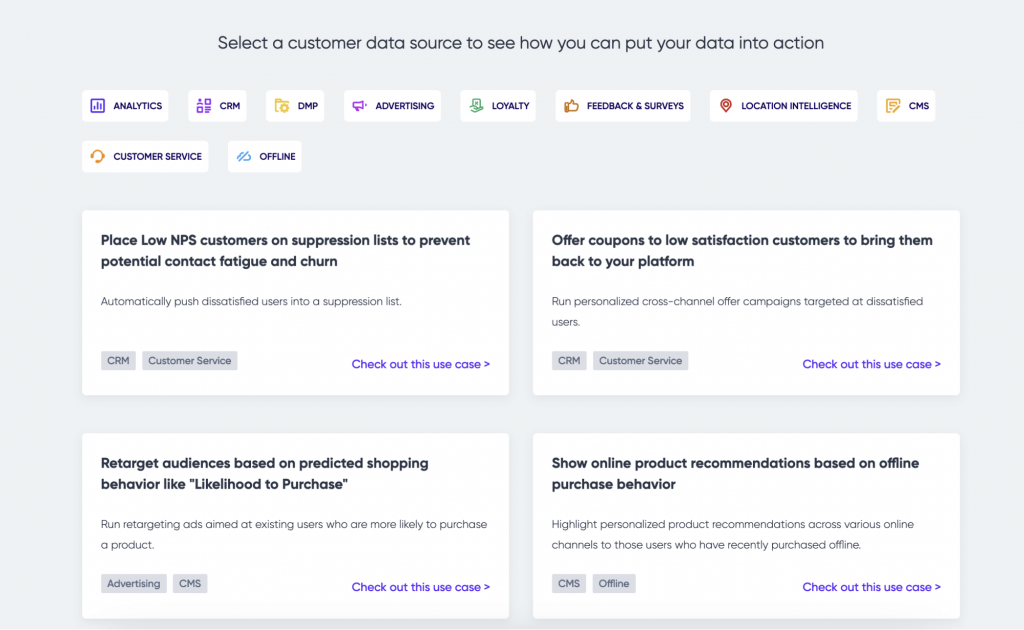
Insider also lets you drill down into the individual profiles of each customer.
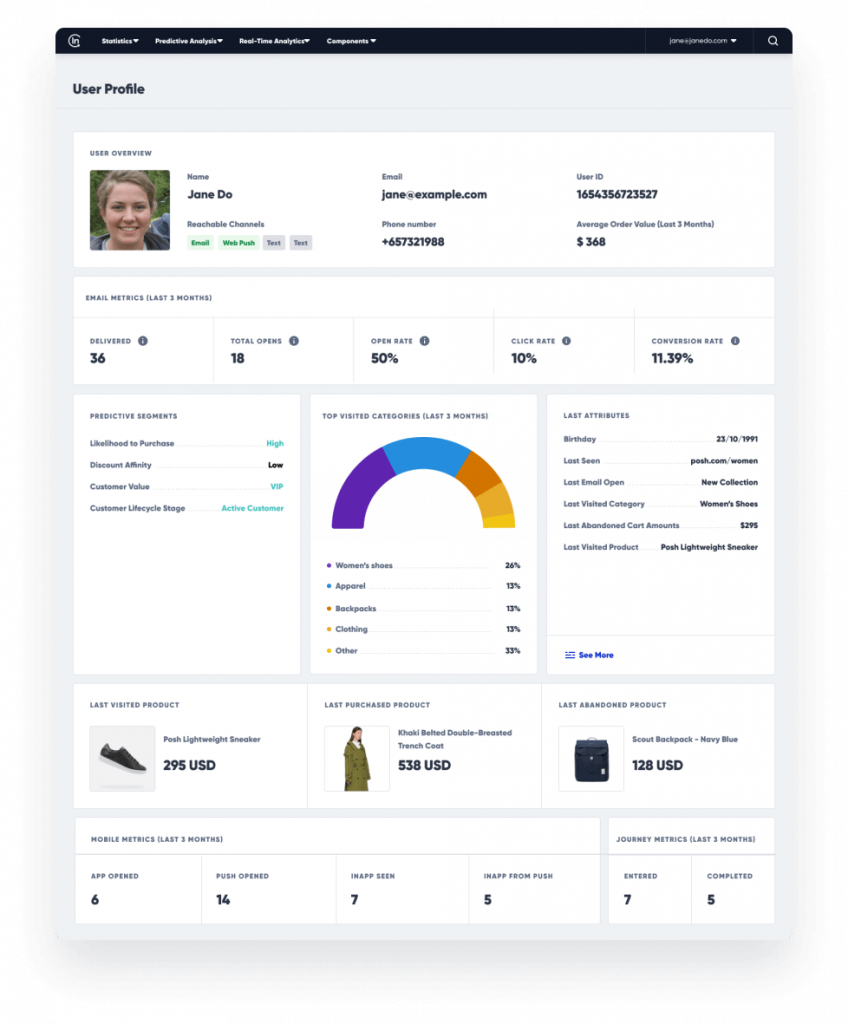
The screenshot above shows a unified customer profile with explicit data like name and email, as well as implicit data like last purchased and abandoned products.
Each subsequent interaction with your brand is fed into this profile, which continuously enriches your dataset and creates a more accurate view of the customer.
However, Insider starts creating these profiles way before you’ve collected any personal data.
For example, as visitors browse your website, Insider creates profiles for them in your Unified Customer Database with information about:
- The pages they visited.
- The price range they’re looking at.
- The products and attributes (colors, sizes, etc.) they’re interested in, and more.
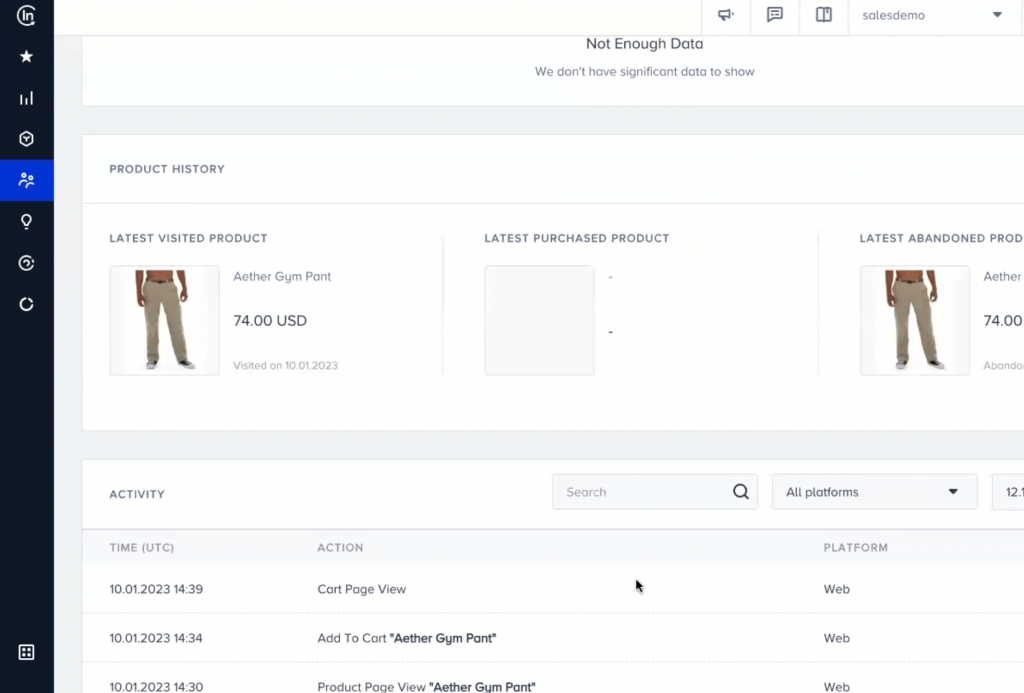
As a result, you have profiles for your visitors before they’ve bought anything or even shared any contact data with you. Insider’s personalization capabilities help you use this anonymous, real-time data to turn visitors into customers faster and reduce CAC, as you’ll see in the next section.
2. Segment Your Audience Based on AI-Powered Predictions, Events, Purchase Behavior, and Much More
Having your customer data in one place is great for avoiding data silos and analyzing the customer journey. But in order for this data to benefit your bottom line, you need to use it to create personalized customer experiences (i.e., data activation).
Insider’s versatile segmentation helps you use your data to create individualized, cross-channel customer experiences that drive more revenue.
Here’s how:
As soon as your data is in Insider, our AI-powered algorithms create various predictive audiences based on:
- Users’ likelihood to purchase.
- Their likelihood to churn.
- Their discount affinity.
- Their potential LTV, and more.
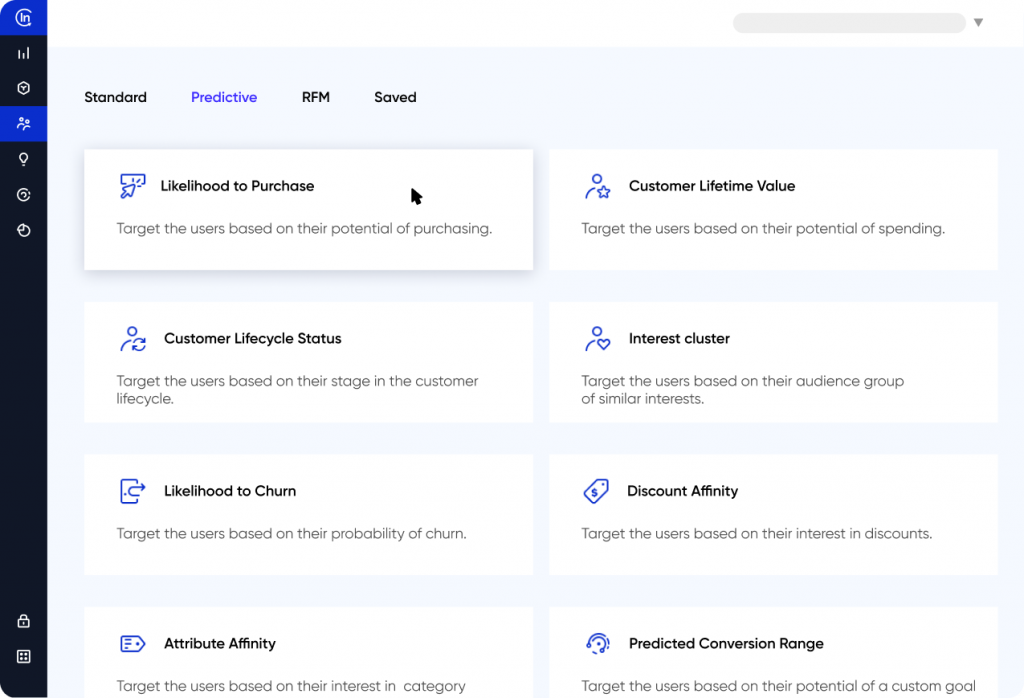
You can also use our standard segmentation to target users based on their:
- Behavior on your site.
- Purchase behavior (frequency, amount, value, etc.)
- Email engagement.
- Triggered events, and more.
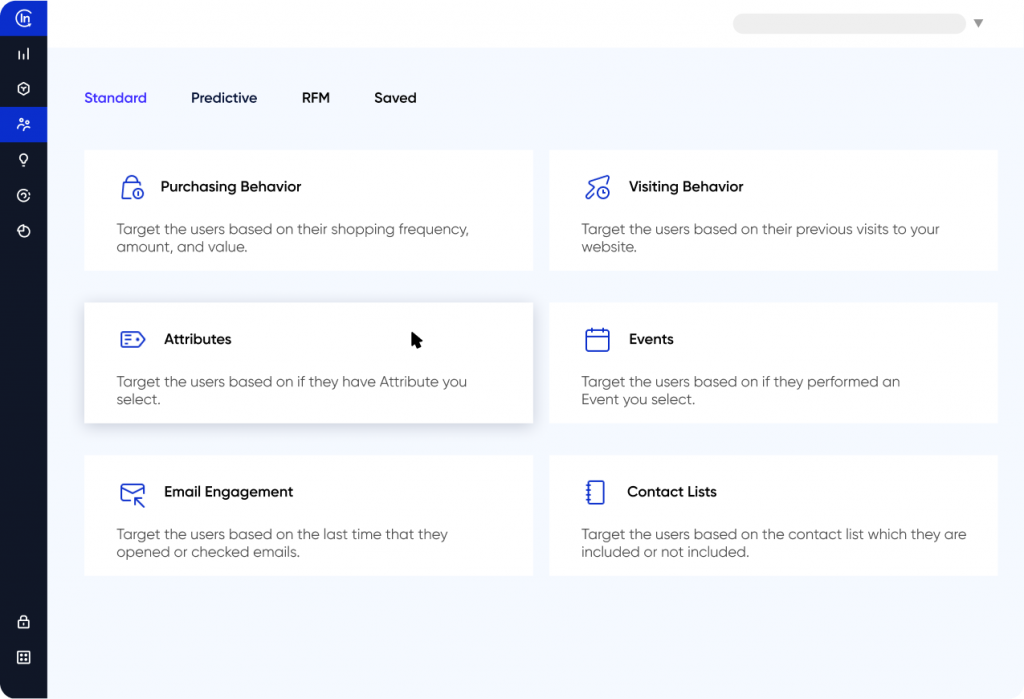
Finally, Insider also creates predefined segments of users who abandoned their carts, visited a product page but didn’t add an item to their cart, or interacted with you via a marketing channel (email, SMS, WhatsApp, etc.)
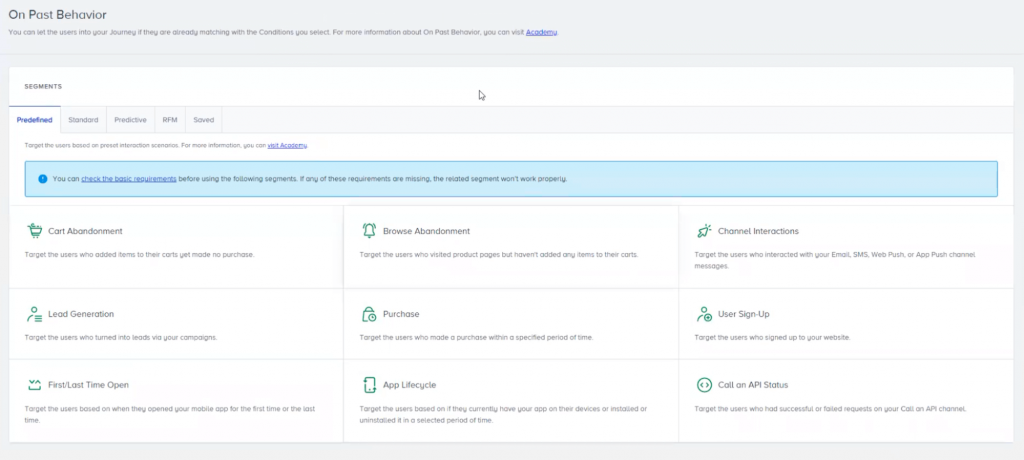
Again, you can take advantage of our powerful segmentation even if most of your audience is unknown (meaning you don’t have any contact information or personal data about visitors).
As unknown visitors browse your site, Insider collects their behavior data — which pages they visit, which products they like, the price ranges they’re looking at, and so on.
Since most users usually don’t purchase on their first visit, Insider helps you bring them back to your site with personalized web push notifications.
All you need to do is send a pop-up to visitors, so they can agree to receive notifications from you (this doesn’t require any personal data).
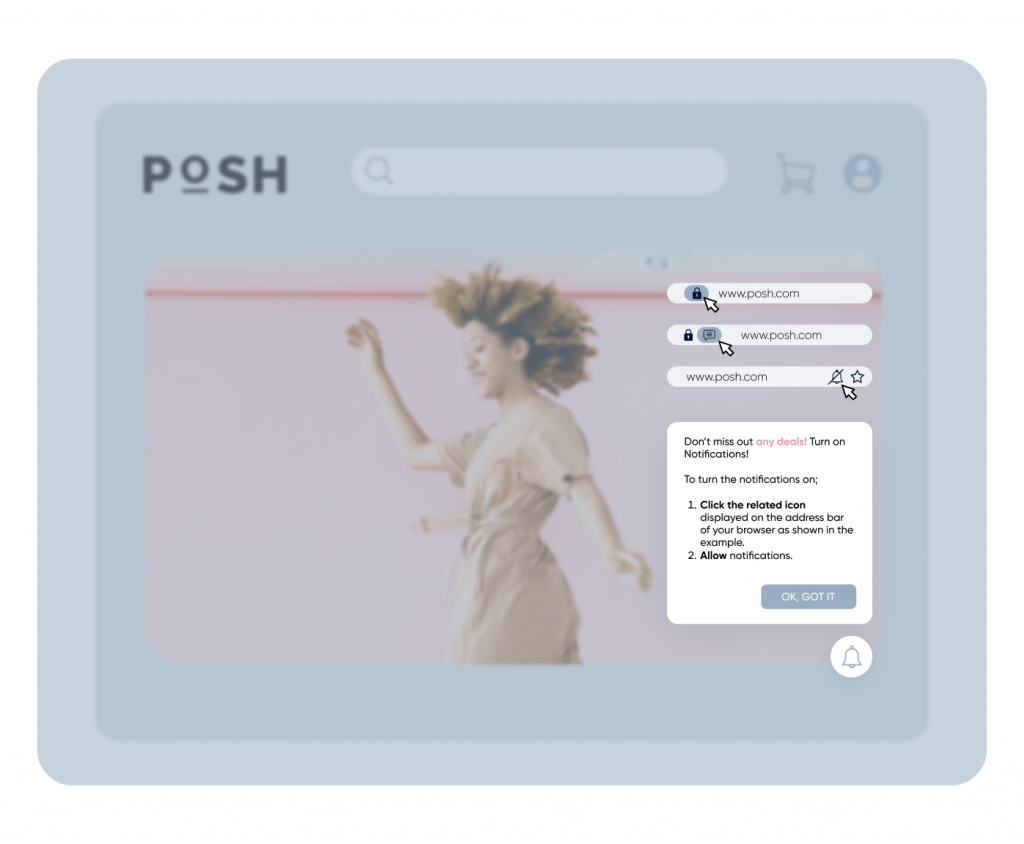
After that, you can bring them back to your site using personalized web push notifications, instead of retargeting them with expensive social media or search ads.
These notifications can also include discounts (for segments with a high discount affinity), a reminder to complete a purchase (for shoppers who already added an item to their carts), and lots of other personalization elements.
For example:
- Carrefour used push notifications to re-engage visitors who had abandoned their carts, leading to an additional $11,000 in revenue in the first month and a 350% uplift in conversion rates.
- Chemist Warehouse used push notifications to target users who abandoned a product page. These notifications included feature details, a photo of the last viewed products, and a personalized offer, which led to an 85% uplift in conversions.
You can learn more about the different types of web push notifications and the benefits of using them in our web push mastery guide.
3. Build and Automate Personalized Cross-Channel Marketing Campaigns
Insidersupport lots of channels like email, SMS, WhatsApp, and Facebook Messenger, so you don’t have to use third-party tools to activate your data on them. This removes the need for complex integrations, simplifies your tech stack, and reduces the number of logins you need to manage.
Additionally, Insider’s personalization and automation capabilities make it easy to orchestrate customer journeys across all of these channels.
For example, say you have a customer segment that repeatedly shows an interest in a product category on your site. When these customers come to your site but don’t buy anything, you can instruct Insider to send them an email with a special offer for products in that category.
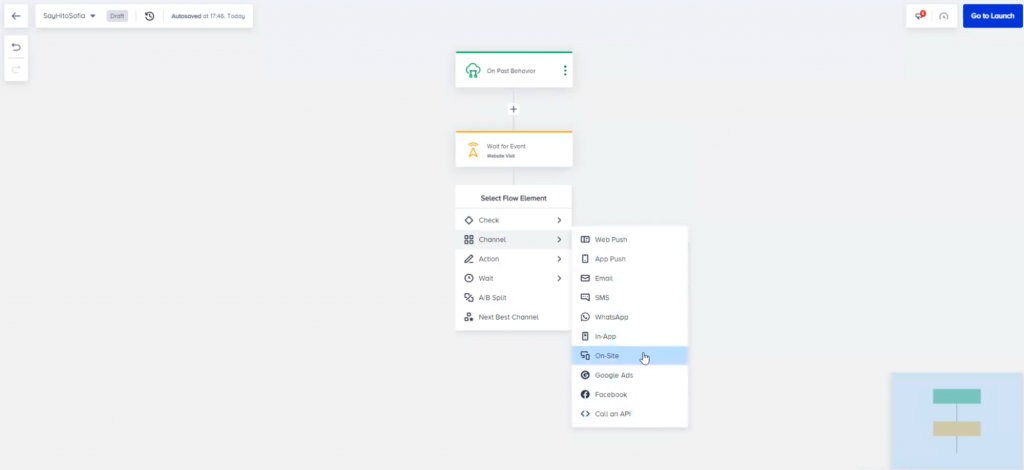
If they still don’t convert, you can let Insider’s AI-powered next-best channel predictions determine which touchpoint to try next (SMS, WhatsApp, Facebook Messenger, etc.)
All of this is done through Architect — our tool for building individualized, cross-channel journeys through a simple intuitive drag-and-drop editor.
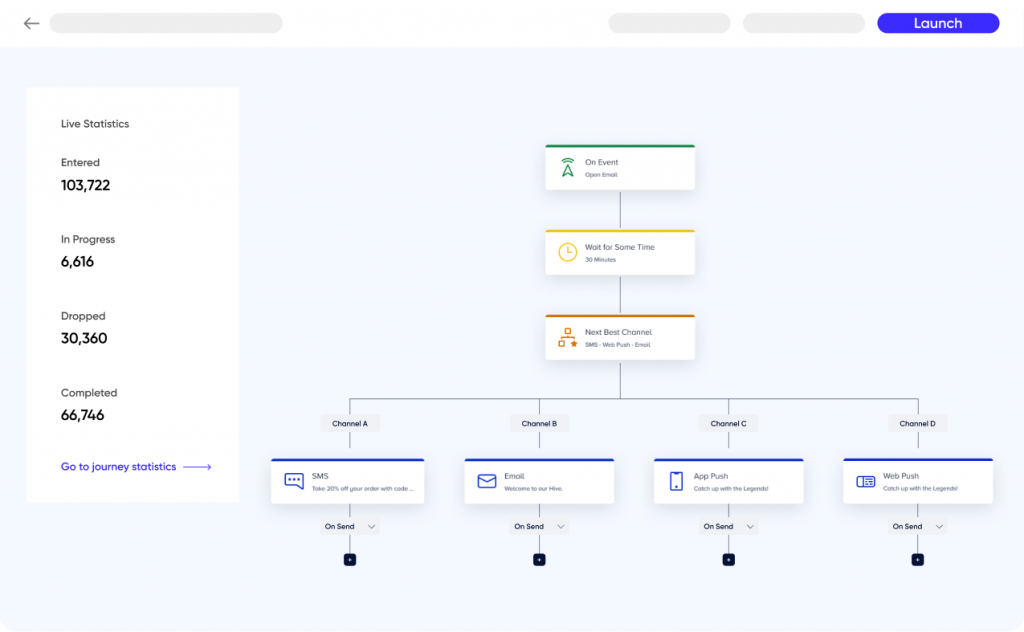
You can also compare the performance of two or more path variations using our A/B Split Testing features.
For example, you can test if push notifications bring more people back to the site than email. Or, you can check if following-up push notifications with an SMS or WhatsApp message yields a better result.

Plus, our Winner Auto-Selection lets you determine the best combination of channels, content, and offers for your goal — whether that’s increasing conversions, boosting customer engagement, reducing CAC, and so on.
Lastly, Insider also comes with tons of pre-made templates for each channel and use case, so you don’t have to start the personalization, automation, and A/B testing processes from scratch.
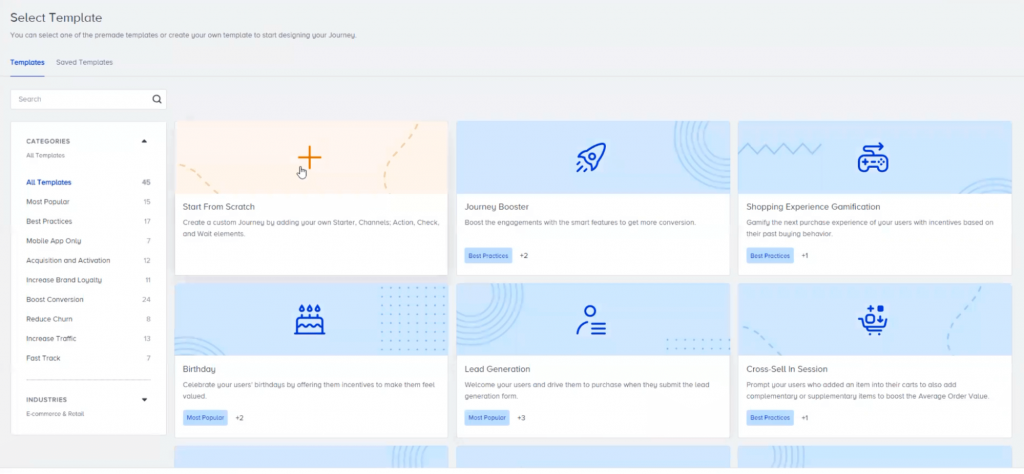
4. Analyze ROI and Make Data-Driven Decisions with Pre-Built and Custom Reports
As we said, Insider provides useful stats and metrics about your visitors and customers out of the box.

However, you can easily customize these reports to include data that’s relevant to you. For example, you can create custom funnels to analyze how users navigate important flows like checkouts or onboarding tutorials.

You can also analyze the success metrics for each channel you’re using, like email deliverability and open rates, web push clickthrough rates, SMS conversion rates, and so on.
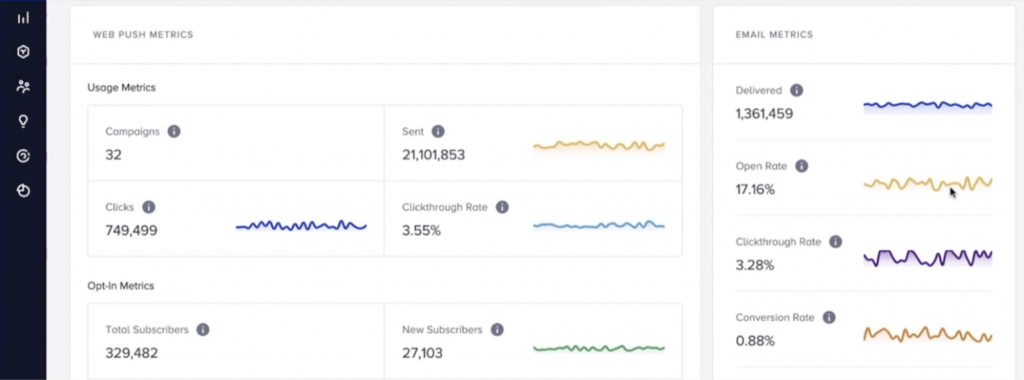
These customizable reports and success metrics can help you:
- Determine the ROI of each channel or marketing activity.
- Evaluate the effectiveness of your overall marketing strategy.
- Make educated decisions about how to distribute your budget.
You can also create custom reports from scratch, like the Executive Summary report shown below.
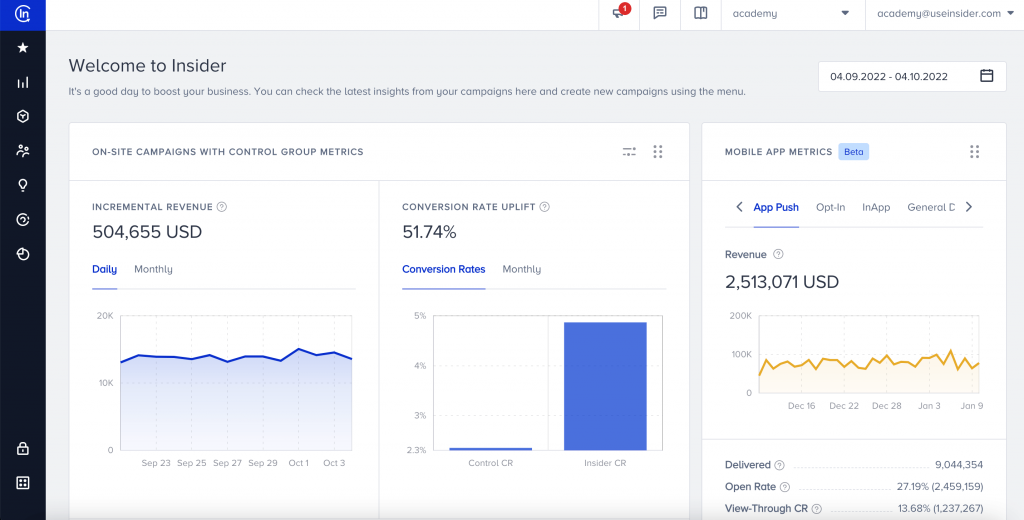
As you can see, this report contains lots of information that would be useful to high-level decision-makers, like revenue, new users, and channel success.
If you want to see how Insider can help your business aggregate all customer data in one place and use it to boost sales, retention, AOV, and LTV, book a live demo with our team.
#2 Bloomreach
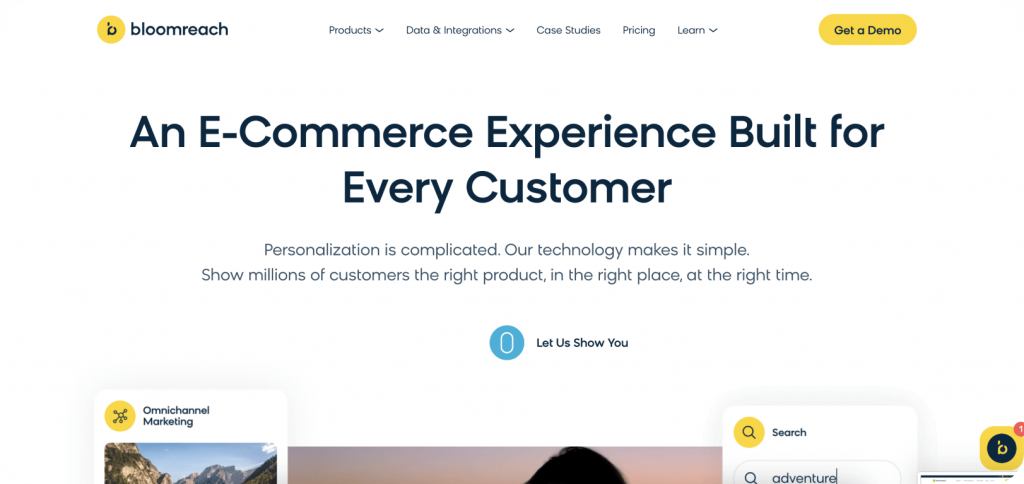
Bloomreach is an eCommerce personalization, engagement, and marketing automation platform. Its CDP (part of the Bloomreach Engagement module) is called a “Customer Data Engine” and it can collect data about customers from various sources. Bloomreach supports different channels for activating your data, such as email, SMS, and on-site and offers various automation, experimentation, and content management features.
Learn more: 11 Top Bloomreach competitors and alternatives (by category).
Note: Click here to see how Bloomreach (left in the screenshot below) compares to Insider (right).
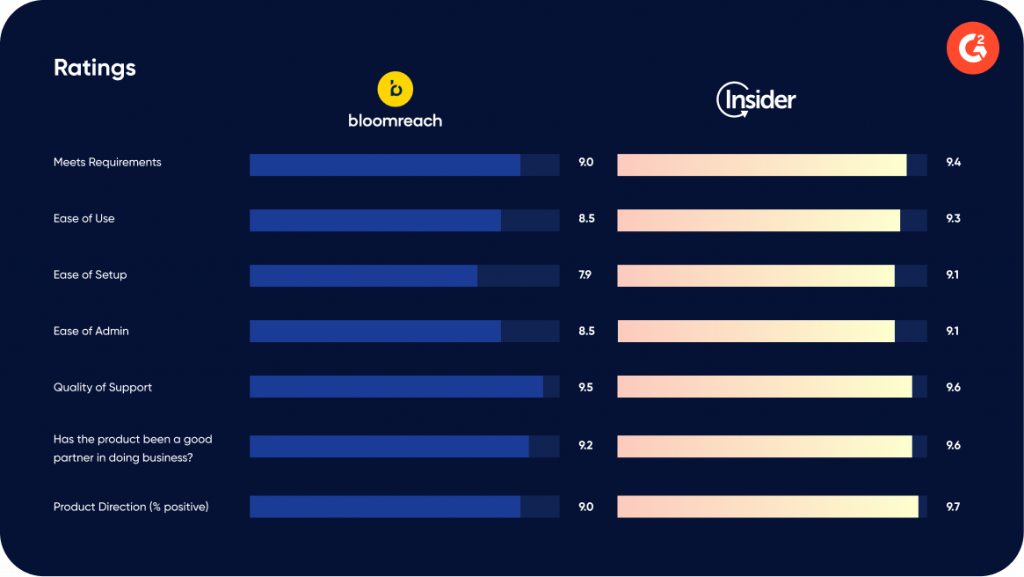
#3 Salesforce Marketing Cloud
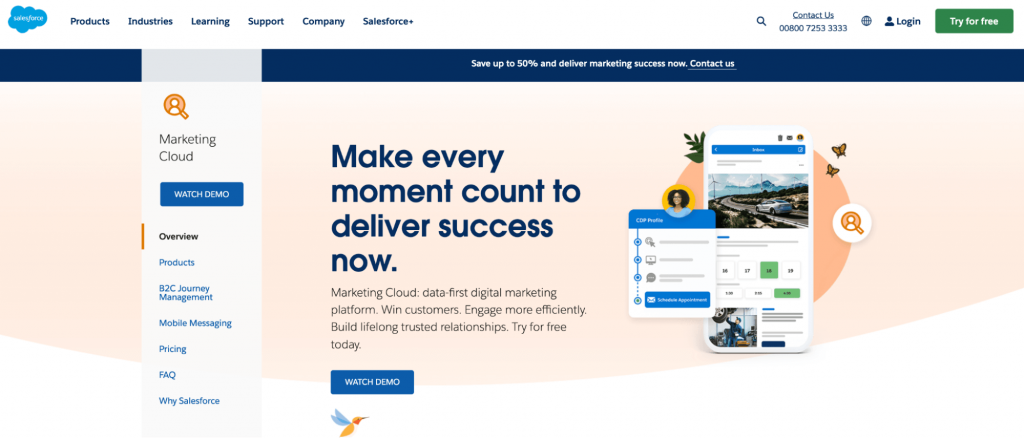
Salesforce Marketing Cloud is a digital marketing platform that combines products for email marketing, journey orchestration, personalization, content management, and more. One of the key products in this stack is the Marketing Cloud CDP, which helps brands aggregate their data, understand their customers better, and optimize their marketing campaigns. Some of the activation channels supported by the Marketing Cloud are email, SMS, on-site, and mobile apps.
Learn more: 5 Best Salesforce Marketing Cloud competitors and alternatives (by category).
Note: Click here to see how Salesforce Marketing Cloud (right in the screenshot below) compares to Insider (left).
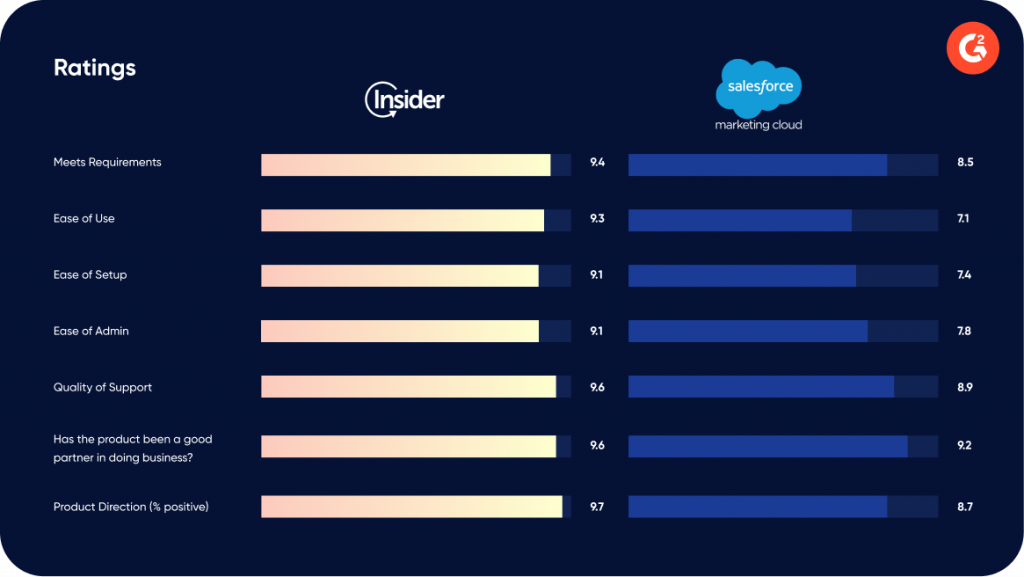
#4 Emarsys
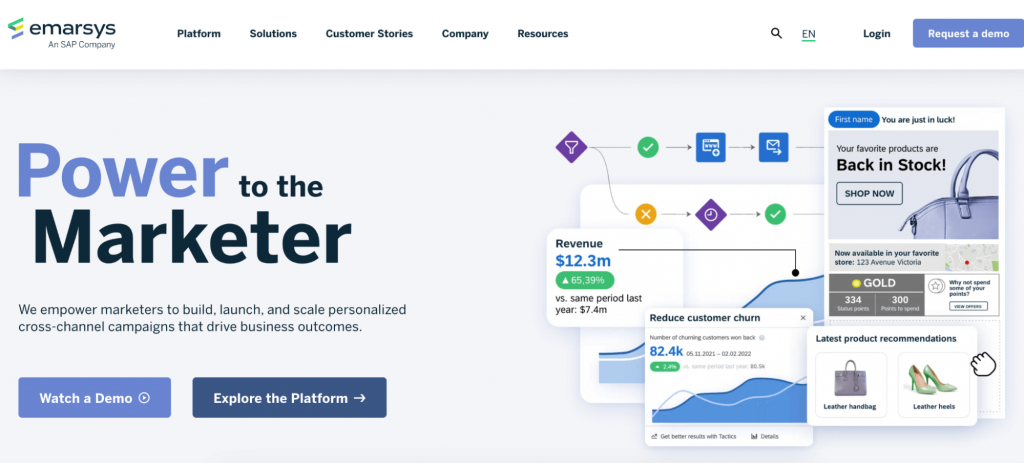
Emarsys is an omnichannel customer engagement platform that was acquired by SAP in 2020. Their CDP is called an “Integrated Data Layer” and it combines, cleanses, and analyzes data to create a single customer view. The platform relies on AI-powered audience segmentation to surface useful customer insights and supports activation channels like email, on-site, SMS, and mobile apps.
Learn more: 9 Best Emarsys competitors & alternatives
Note: Click here to see how Emarsys (left in the screenshot below) compares to Insider (right).
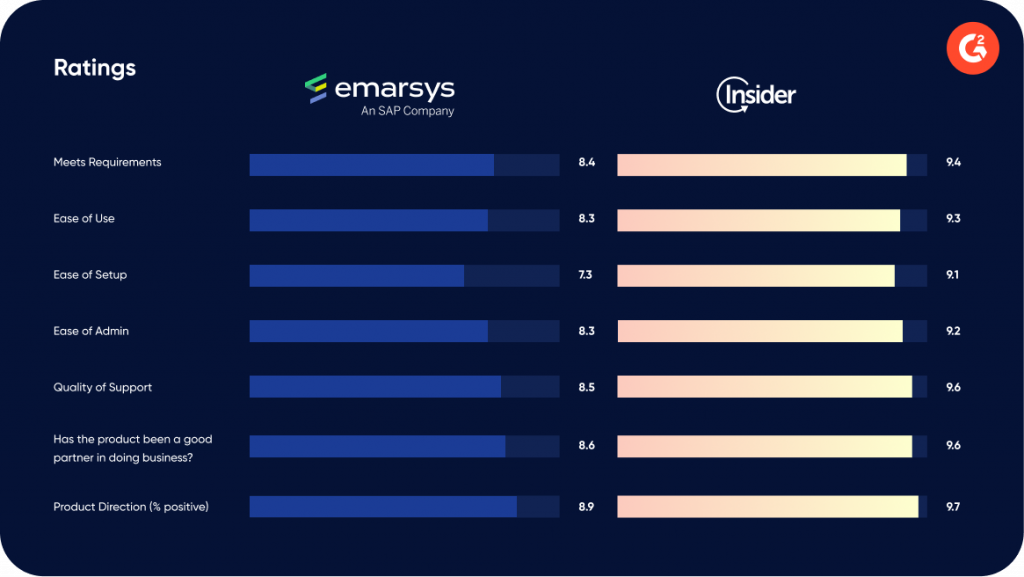
Access and Data Analytics CDPs
These CDPs focus on more technical use cases like:
- Data governance and standardization.
- Diagnosing and fixing data quality issues.
- Loading data into warehouses like BigQuery and Snowflake.
This makes them a great choice for data analysts, data scientists, and developers who want to manage, transform, and analyze their data.
At the same time, these traditional CDPs don’t support as many native channels or personalization features as the Actionable CDPs. This means you’ll need to integrate them with third-party tools (e.g., email tools, SMS solutions, or WhatsApp marketing software) to activate your data across channels, which can make their setup and workflow complex and reliant on developer assistance.
#5 Segment
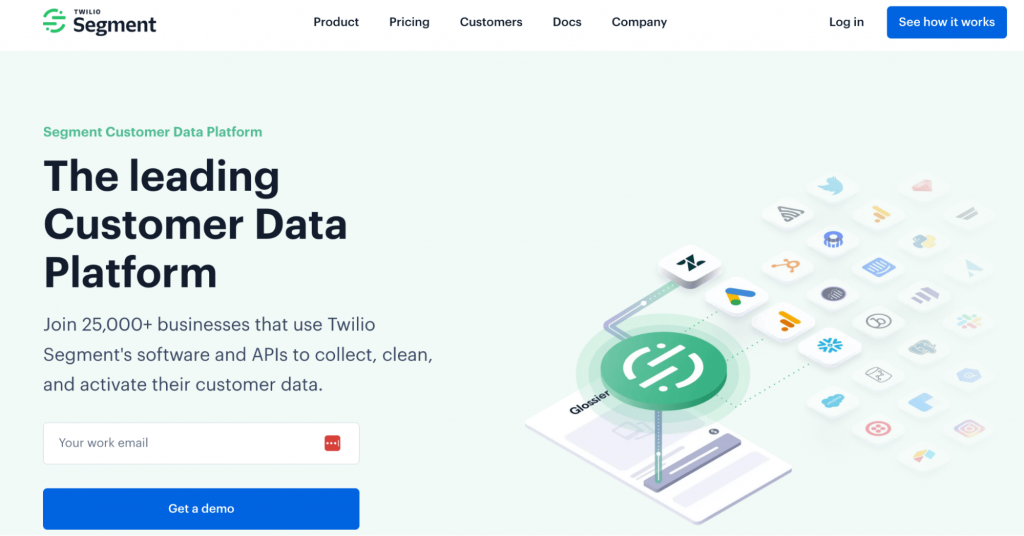
Segment is the company that made CDPs popular in the first place. Like Emarsys, Segment was also acquired by an enterprise company in 2020 (Twilio) but still exists as a standalone CDP. Segment has lots of integrations with popular marketing tools, customer support platforms, and data warehouses. It can also be integrated with Twilio Engage for brands looking to fuel their SMS and email campaigns with insights from their aggregated data. See 9 best Emarsys competitors and alternatives (detailed review).
Note: Click here to see how Segment (right in the screenshot below) compares to Insider (left).
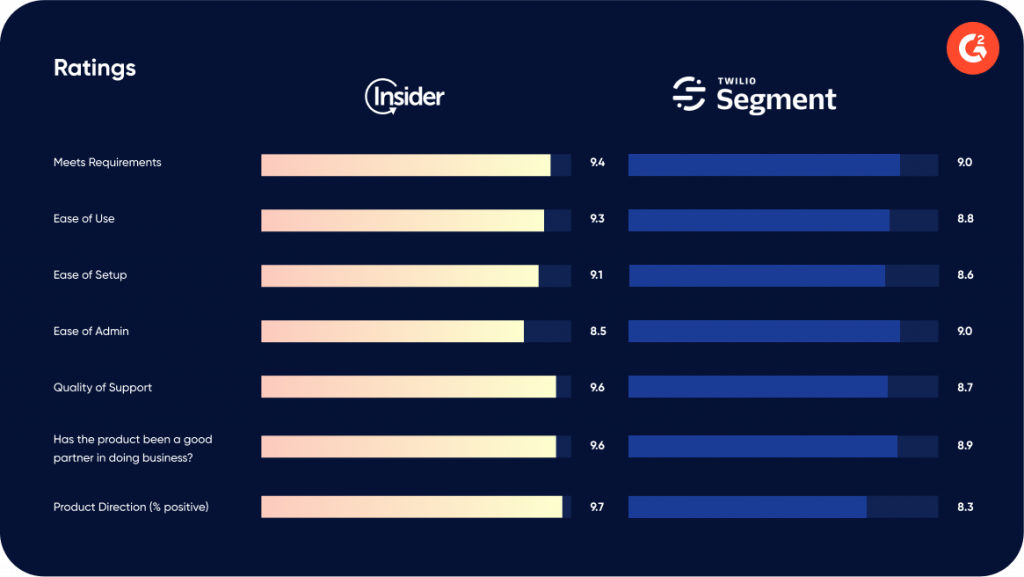
#6 Tealium
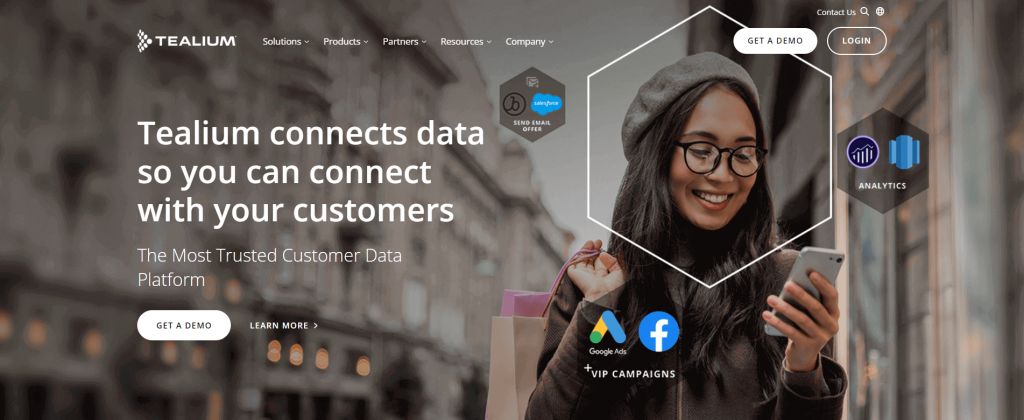
Tealium is a CDP that combines five different products:
- Tealium AudienceStream CDP, which creates unified customer profiles from various data sources.
- iQ Tag Management, which helps companies manage their customer data and marketing tools across web, mobile, IoT, and connected devices.
- EventStream, which is a data collection and delivery solution for mobile, IoT, and connected devices.
- PredictML, which uses machine learning to predict the likelihood of certain customer behaviors.
- Data Access, which gives companies a single source of clean customer data.
#7 mParticle
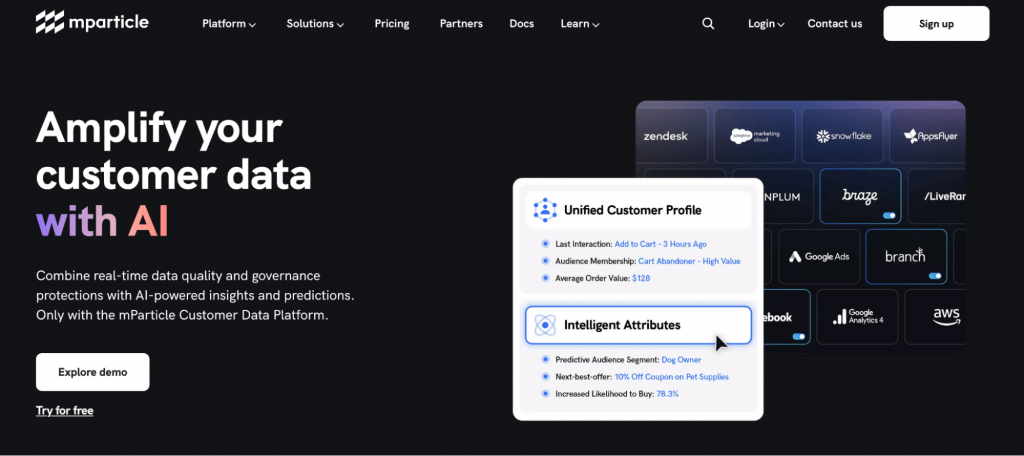
mParticle helps brands build a single view of their customers, create segments, and utilize predictive analytics. mParticle also offers schema management and transformation tools that help developers manage data quality. This CDP supports lots of data integrations with tools for product, development, and marketing teams, including Insider, Google Analytics, BigQuery, and Amazon RedShift.
#8 Treasure Data
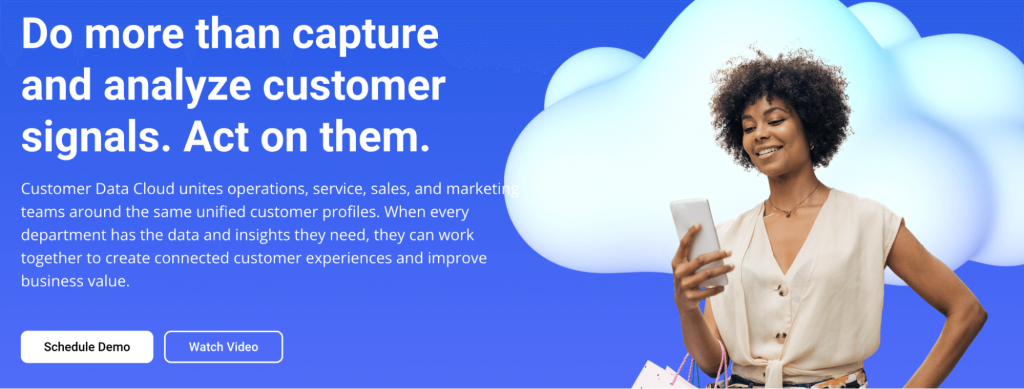
Treasure Data is a Customer Data Cloud that unifies data and ensures compliance and security. Its CDP can be useful for marketing, sales, customer success, and technical teams. It also supports many different technical use cases like data hygiene and advanced analytics but doesn’t have built-in activation channels.
Bring Your Customer Data in One Place and Use it to Drive Revenue With Insider
Insider’s Actionable CDP can aggregate all your customer data from any relevant source into one place. Our team will help you get that data into Insider as fast as possible, so you can focus on what really matters — segmenting your audience, uncovering valuable customer insights, and driving revenue.
Plus, Insider’s personalization features and broad channel support — including email, SMS, WhatsApp, on-site, and more — will help you create individualized, cross-channel customer experiences.
Click here to book a demo with our team and learn how Insider can help you reach your business goals.
Frequently Asked Questions (FAQs)
CDPs and data management platforms (DMPs) don’t do the same thing. While they both collect and organize customer data, they focus on different types of information and are used for different purposes.
– DMPs are mainly used for storing third-party data with the goal of helping advertisers, and social media or podcast ad agencies segment and target audiences via paid ads.
– CDPs make use of all kinds of data, including first-, second-, and third-party data to help brands remove data silos, understand their customers, and build detailed customer segments.
Overall, CDPs are more versatile than DMPs, as they can be employed in all sorts of use cases beyond paid advertising, like unifying all customer data, personalizing on-site experiences, and creating multichannel customer journeys.
Customer relationship management systems (CRMs) like Salesforce store customer interaction data like emails, support tickets, sales demos, and contracts. They’re used by marketing, customer support, and sales teams as a single source of truth regarding interactions with leads and customers.
CDPs provide a single place to store all customer and visitor data, regardless of its source. This can include customer interaction data, but it can also include behavioral data, event data, survey data, and much more. This makes CDPs a better choice for companies that want a unified view of the data generated at each customer touchpoint, not just through interactions with the sales and customer support teams.
CDPs can aggregate different types of data, including:
1. Basic customer information, like names, email addresses, phone numbers, and demographic details.
2. Behavioral and interaction data, such as website visits, product purchases, message channel interactions (e.g., email, SMS, and WhatsApp), and frequently used features.
3. Attitudinal data, like survey responses, net promoter scores (NPS), customer effort scores (CES), and preferences.
Depending on the data source, CDPs can also work with first-, second-, and third-party data. However, most brands have shifted their focus toward first-party data due to strict data privacy regulations (like the GDPR and CCPA) and recent privacy updates from Google and Apple.

